Introduction
One of the best ways to prevent diarrhea diseases is to wash hands after defecating or handling babies' feces, and before preparing food, feeding children, or eating.
Keeping a source of clean water near your home will make hand-washing much easier. But washing with water alone is not enough. To make hand-washing effective, use soap to remove dirt and germs. If no soap is available, use sand, soil, or ashes.
Rub hands together well with soap and flowing water like that from a pump, faucet, or tippy-tap. Count to 30 as you scrub your hands all over. Then rub hands together under the water to rinse off soap, sand, or ashes. Dry with a clean cloth or let your hands dry in the air.
The tippy-tap: A simple hand-washing device
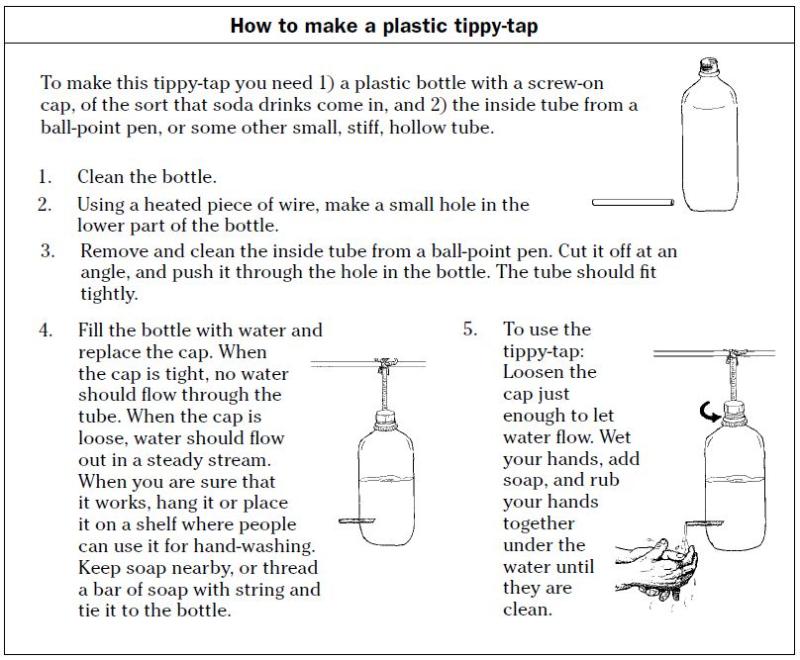 |
| How to make a plastic tippy-tap |
|
© The Hesparian Sanitation
|
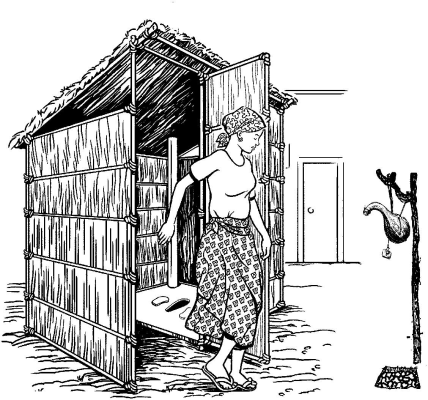 |
| Tippy-taps can also be made with different designs and from different materials. Another that is common is made from a dried calabash gourd. |
|
© The Hesparian Sanitation
|
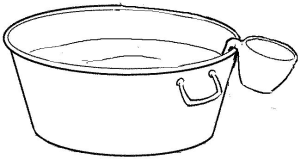 |
| Basin |
|
© The Hesparation Sanitation
|
Sanitary use of water for toilet hygiene
- Refill the container with wash water often. Do not let it go unwashed for more than a day. The longer it sits, the more germs grow in and on it.
- Wash the container with soap or ashes every time before you fill it.
- The container used for anal washing should be stored away from other water containers and away from places where food is prepared.
- Wash your hands well after the last time you touch the container - germs are sure to be on its handle and surfaces!
How to make soap
Recipe
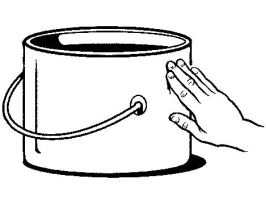 |
| Testing temperature |
|
© The Hesparian Sanitation
|
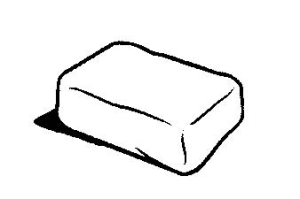 |
| Soap |
|
© The Hesparian Sanitation
|
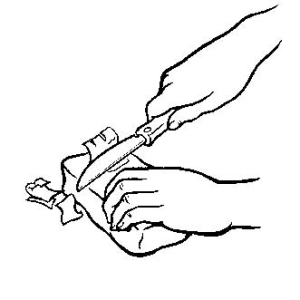 |
| Cutting bar soap |
|
© The Hesparian Sanitation
|
 |
| Pieces of bar soap |
|
© The Hesparian Sanitation
|
- The fat or oil was rancid or dirty and not cleaned enough.
- The lye water was too hot or too cold when it was poured into the oil/fat mixture.
- The mixture was stirred too fast or not long enough.
If the soap is not good, try again:
- Cut the soap into bits. Put it in a pot with 12 cups (2.8 liters) of water. Use gloves to touch the soap.
- Bring it slowly to a boil. Boil for 10 minutes, stirring at times.
- If the soap had too little lye (no bite at all), add a small amount of lye. If the soap had too much lye (sharp bite), add some pre-boiled, strained and cooled fat. Stir until the spoon causes lines to appear on top of the thick solution.
- Pour into molds. Let stand 48 hours. Cut into bars, stack the bars on trays and let them sit for 4 to 6 weeks.
Information Source Links
- Sanitation and Cleanliness for a Healthy Environment - The Hesperian Foundation in collaboration with the United Nations Development Programme (2005). The Hesperian Foundation
